On Thursday, students got up in the morning, had breakfast and walked to their daily morning lecture.
Shortly after lunch, the students walked with Prof. Pinsker and the staff to the Cumberland County Historic Courthouse, where Assistant Program Director Cooper Wingert gave a lecture on its history. Students went inside the air-conditioned courthouse, where they were able to relax away from the heat outside and listen to Cooper.
After the visit to the courthouse, students and staff walked back to the campus grounds, where they began the House Divided Project’s very own Dickinson and Slavery Walking Tour. Interns Olivia, Sarah, and Andrew each covered their own tour stops. Olivia covered Dickinson’s history on the issue of slavery during the earliest years of the campus, Sarah covered the infamous Dred Scott decision where Dickinson alumnus Roger B. Taney was the Chief Justice, while Andrew covered many of the notable formerly enslaved black people who worked at Dickinson during the Nineteenth Century. Students ended their tour visiting the museum-styled House Divided Studio, where they looked at many photos related to Civil War era topics and slavery.
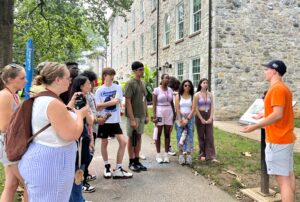
Intern Andrew speaks to students about Noah and Carrie Pinkney, a formerly enslaved couple who worked in Carlisle during the Nineteenth Century.
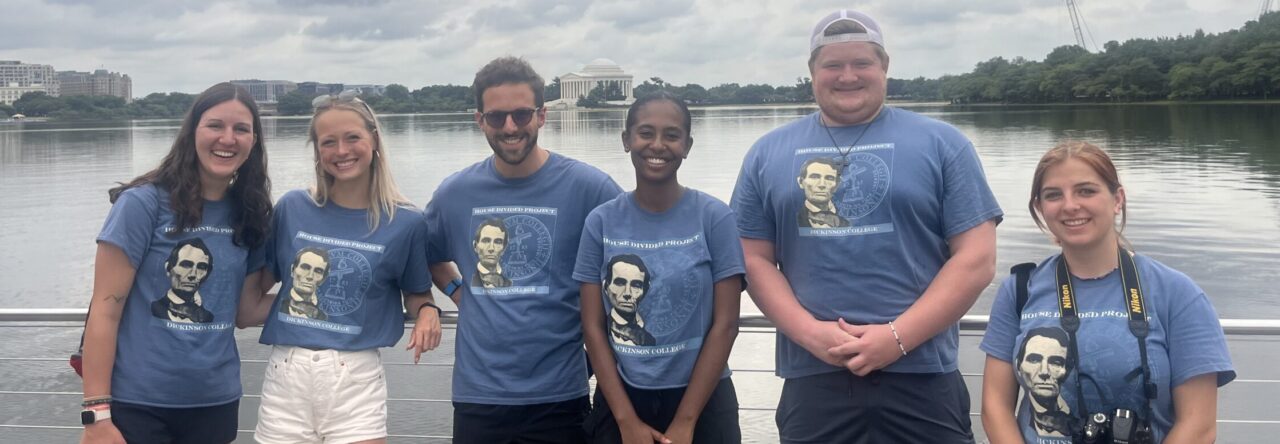

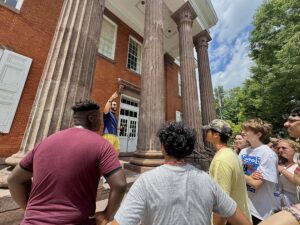
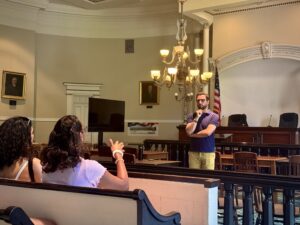
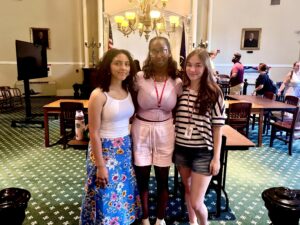
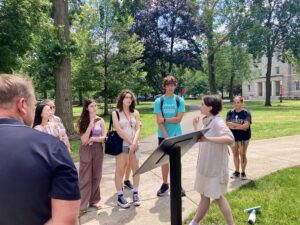
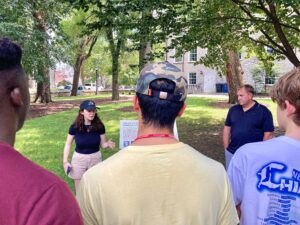
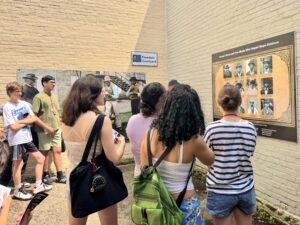
Leave a Reply